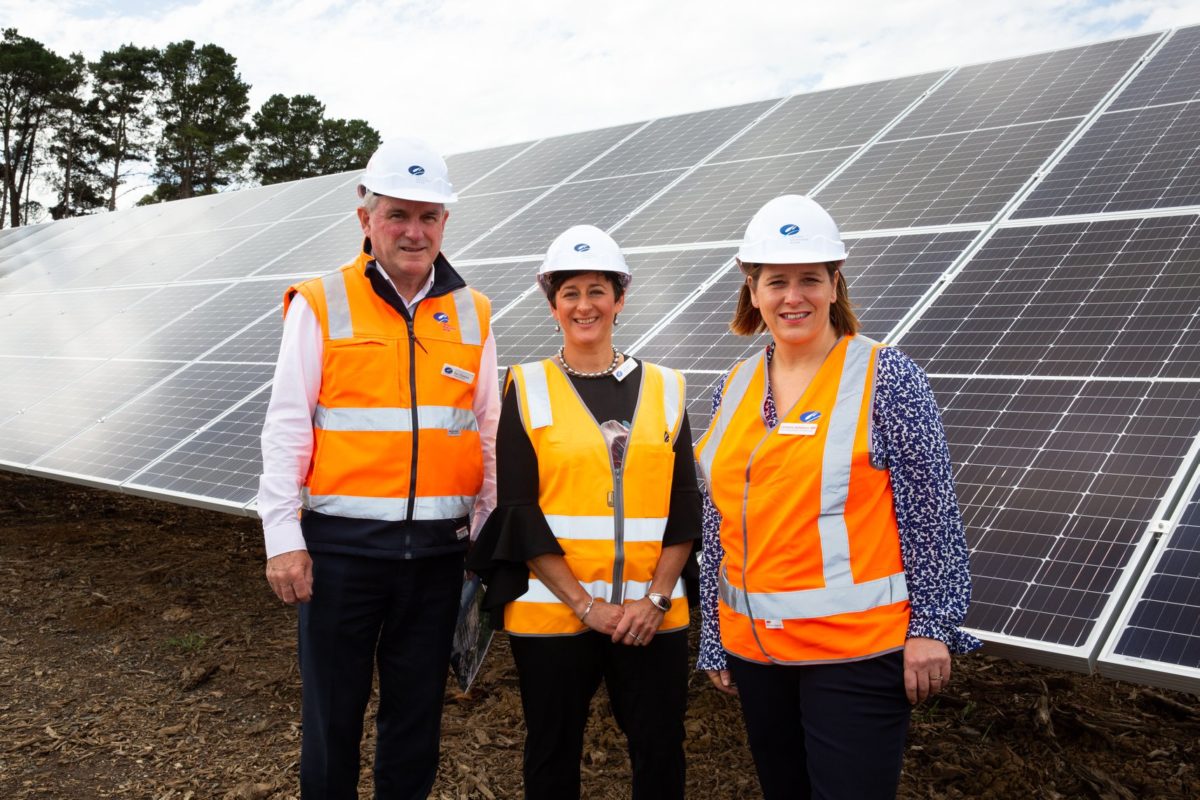The people of Victoria’s Central Highlands were asked for their input by their water utility, Central Highlands Water (CHW). CHW called the program “Let’s Talk Water”. However, what CHW discovered is that what local residents wanted to talk about was solar. The community valued renewable energy and wanted it to be used to make their water supply sustainable.
The result is a community-driven Solar Initiative, including five large and medium-scale solar installations across four of CHW’s water and wastewater treatment plants that will supply approximately half of those facilities’ power needs.
“The community told us they valued the use of renewable energy,” said CHW Managing Director Paul O’Donohue, “but at no extra cost to them.”
“We are pleased to be able to deliver on that goal with this initiative, which is also a step forward in delivering our Emissions Reductions Pledge to reduce greenhouse gas emissions by 20% by 2025.”
It must also be said that such an initiative also contributes to the Victorian Government’s Renewable Energy Target of 50% renewable energy by 2030.
CHW claims the Solar Initiative will generate 3500 MWh of clean energy, equivalent to the annual energy use of 750 Victorian homes. “The solar is designed so that the majority of the energy is used to power the treatment plants,” continued O’Donohue, “and from time to time some of the renewable energy will be exported to the grid.”
The four chosen sites are by no means on the utility’s periphery, combined they have the potential to comprise up to 70% of the utility’s total electricity usage. The sites are Ballarat North and South Wastewater Treatment Plants, Lal Lal and White Swan Water Treatment Plants and the White Swan pump station.
CHW has previously installed smaller-scale solar arrays on its Learmonth Road office, the Daylesford and Maryborough Water Treatment Plants and mini-hydro electricity generators at Lal Lal Water Treatment Plant and the Goldfields Superpipe.
CHW is expecting to see an overall reduction in its energy costs of 20% which it will look to reinvest in the community.
A river of solar is beginning to flow
In January 2020, researchers at the University of Queensland quantified the amount of on-site renewable energy generation being utilised by the nation’s water industry. The report, which looked at the electricity usage of water utilities in 2018, found that the Australian water industry only generated 18% (279 GWh/y) of its electricity demand from on-site renewable electricity sources.
However, if there is one thing we can take heart in as we muddle through this energy transition, it is that once a change begins to take, it takes up quickly.
In 2019, the year proceeding the researchers’ focus, thirteen of Victoria’s water corporations partnered to buy clean energy from the Kiamal Solar Farm. And only this week it was announced that Western Australia’s government-owned Water Corporation has committed $30 million over three years for solar energy projects around the state. And in South Australia, the state’s largest water and sewage services supplier is planning a $300 million investment in solar and energy storage during the course of this year as it looks to achieve its ambitious goal of achieving a zero cost energy future.
CHW is yet another tributary to the river of Australian water utilities investing in solar in order to clean themselves up at the source.
This content is protected by copyright and may not be reused. If you want to cooperate with us and would like to reuse some of our content, please contact: editors@pv-magazine.com.









1 comment
By submitting this form you agree to pv magazine using your data for the purposes of publishing your comment.
Your personal data will only be disclosed or otherwise transmitted to third parties for the purposes of spam filtering or if this is necessary for technical maintenance of the website. Any other transfer to third parties will not take place unless this is justified on the basis of applicable data protection regulations or if pv magazine is legally obliged to do so.
You may revoke this consent at any time with effect for the future, in which case your personal data will be deleted immediately. Otherwise, your data will be deleted if pv magazine has processed your request or the purpose of data storage is fulfilled.
Further information on data privacy can be found in our Data Protection Policy.